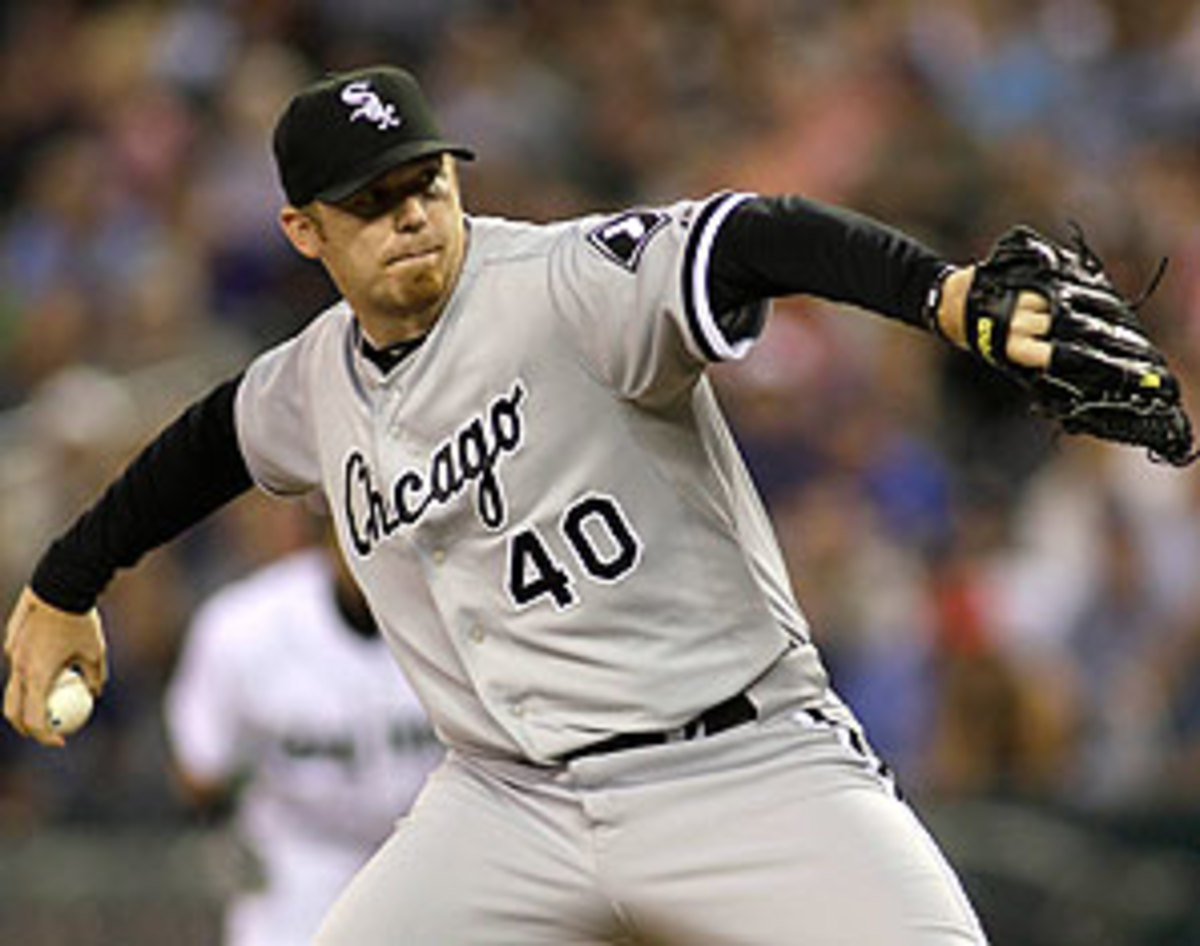Five Cuts: Towers rebuilding D-backs bullpen one arm at a time
LAKE BUENA VISTA, Fla. -- Few general managers would have the temerity to turn a legit 30-home run infielder into two pitchers who neither start nor close games. But new Arizona GM Kevin Towers is the master bullpen builder, and the architect has wasted no time showing off his specialty.
The Diamondbacks' trade of third baseman Mark Reynolds for relievers David Hernandez and Kam Mickolio, coupled with the signing of free agent reliever J.J. Putz to be the closer, echoes how Towers often built his San Diego staffs: from the back forward. It's the strategy former GM John Hart used in Cleveland, in part because it's less expensive to build a deep bullpen than a deep rotation.
The Arizona bullpen needed serious attention. It was woeful in 2010, posting a 5.74 ERA while serving up a league-high 62 homers. Pitchers that can keep the ball in the park late in the game are especially valuable. The three best NL bullpens last season at doing that all made the playoffs: San Francisco, Atlanta and Philadelphia.
So Towers' bullpen is almost guaranteed to get better, if only because it's hard to be worse. (The nadir was the 2007 Rays' bullpen with its 6.16 ERA.) The acquisitions of Putz, Hernandez and Mickolio fit Towers' established style: he doesn't care much about balancing righties and lefties, he likes different looks among his relievers and he likes a trick pitch or tricky delivery sprinkled in his 'pen.
(Arizona took the lack of left/right balance to an extreme last season. Its pitching staff used righthanders for 90 percent of opponents' plate appearances.)
Will it work? Check out the table above to see Towers' track record in San Diego, where he excelled at building a bullpen with bargains. From 2004-2009 his starters led the National League in ERA twice and his relievers finished in the top two three times.
That's a good track record with bullpens, showing some consistency in an area notorious for lacking consistency.
Still, Towers has a long way to go. The third base platoon of Melvin Mora and Geoff Blum is an old bench masquerading as an everyday unit. The lineup will strike out less, but rightfielder Justin Upton is left with little protection. The bullpen alone should make for some improvement in the NL West, but it's only a start for Towers.
Seven years for Cliff Lee? Gulp. What kind of risk would a team be taking to pay him about $45 million for his ages 37 and 38 seasons? A very large one -- unless it doesn't mind that kind of cash for a middle of the rotation guy at the end of the contract.
Over the past five years, no pitcher has won more than 26 games in their age 37-38 seasons (Mike Mussina won 26 in 2006-07). Even if you look at the past quarter of a century, only six pitchers have won as many as 30 games in their 37-38 seasons. Here are the guys with the most wins at 37-38 since 1985:
Why couldn't Adrian Gonzalez be the Joe Mauer of San Diego -- the local kid who gets big money to stay in his hometown long term? The Padres just don't have enough revenues, especially local TV money. San Diego gets only about $16 million a year from local TV, with two years remaining on the deal. The Padres, one GM said, need to explore their own regional network or get a big fish such as Fox to bite. Fox upgraded the Rangers' financial planning with a new deal that pays Texas about $80 million a year beginning after the 2014 season -- though a huge up-front bonus serves as a nice bridge until then.
If the Padres paid Gonzalez $20 million a year to keep him, they'd be left with about $30 million for all other players.
"For us to spend 40 percent of the payroll on one player doesn't make a lot of sense," GM Jed Hoyer said. "You're putting yourself at risk. I'm not sure a player wants that, either."
Gonzalez, for instance, was uncomfortable with such a payroll imbalance, figuring the cost of staying was not leaving San Diego with enough money to build a competitive team around him.
Are you ready for doubleheaders in the postseason? No, I didn't think so. But general managers are so enamored with making an additional round of playoffs a best-of-three scenario --rather than a one-game elimination -- that last month they tossed around ideas about how to wedge the necessary games and off days into an already lengthy postseason calendar.
One idea posed by an AL GM was to play Game 1 in the park of the wild card team with the lesser record and Games 2 and, if needed, 3 on the same day in the park of the wild card team with the better record. Thankfully, the idea gained little traction. By the way, every GM but one, from an AL Central club, voted in favor of the idea of expanded playoffs.
Commissioner Bud Selig's 14-member on-field committee tackled several issues Tuesday -- expanded replay and expanded playoffs always are hot topics -- in its ongoing discussions. One insider familiar with the meeting described the dialogue as "productive," though the committee made no decisions or recommendations except one: to meet again next month in Phoenix.






